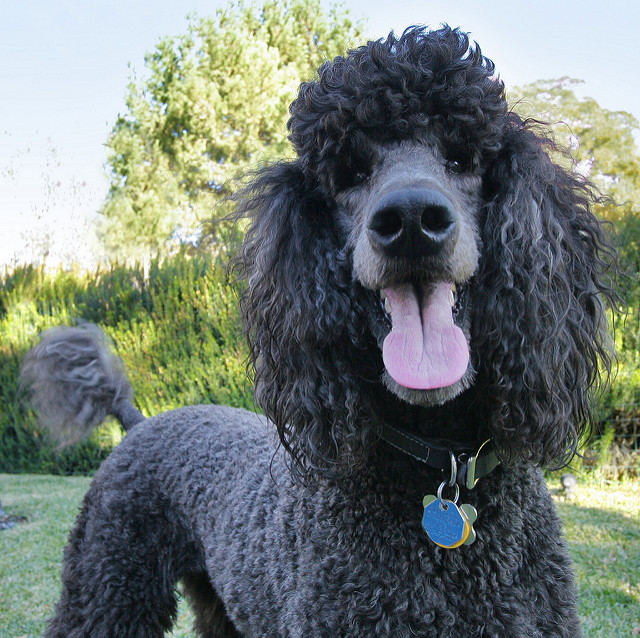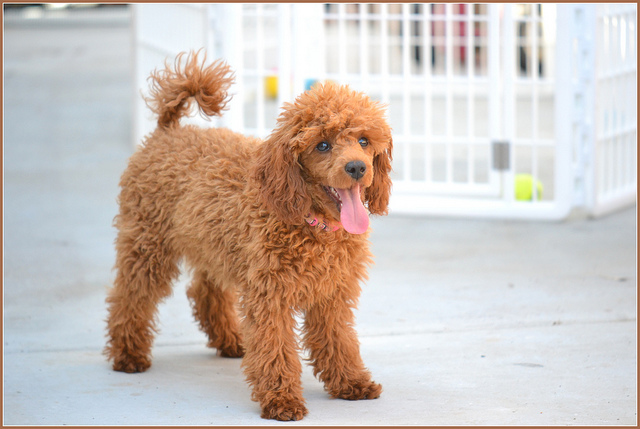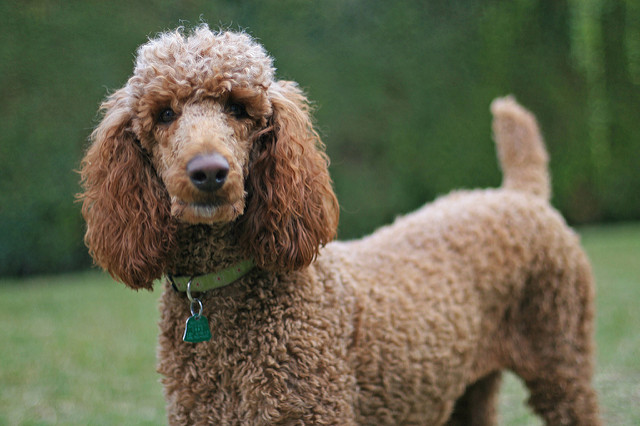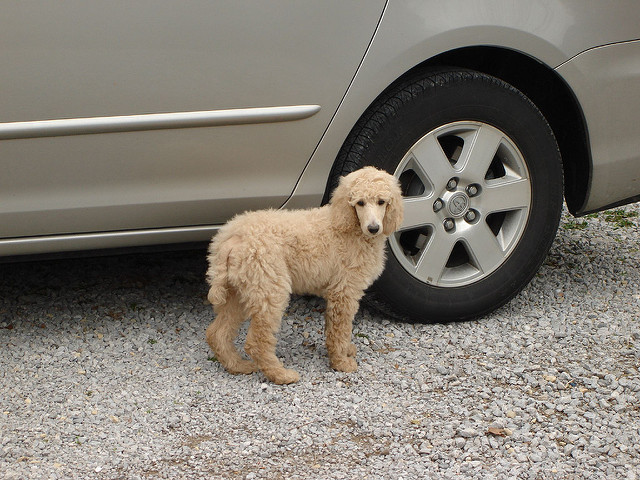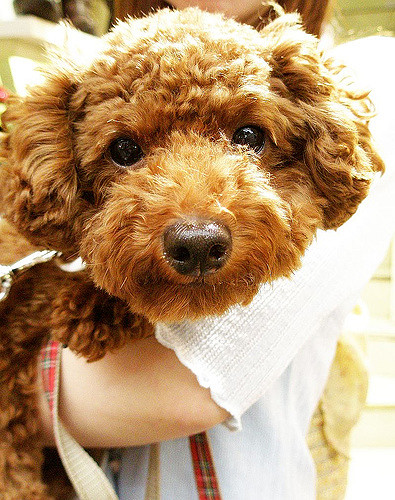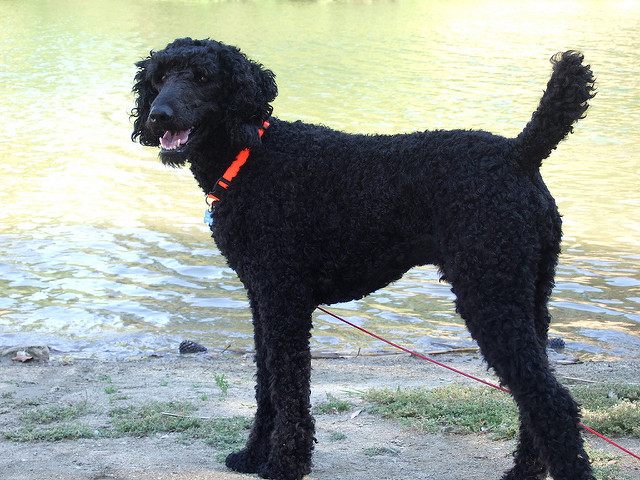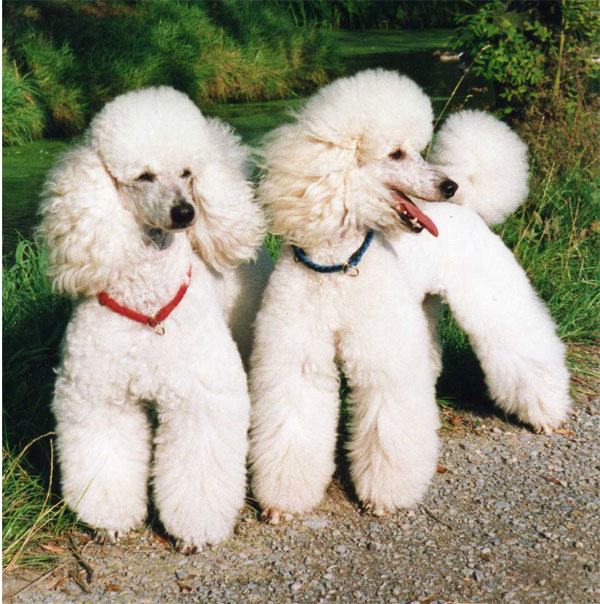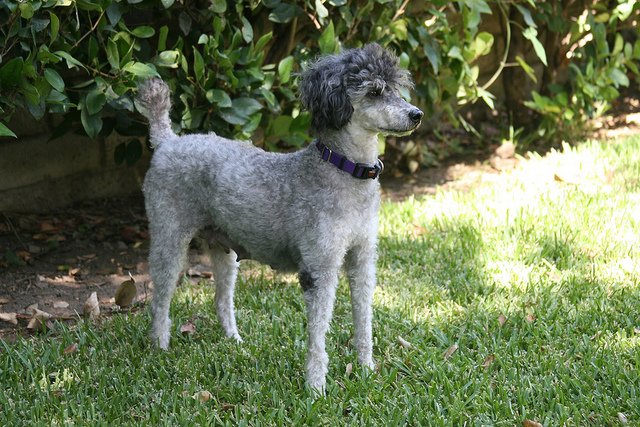There is a great deal of information regarding poodle colors and what makes up the variations that you will often see across the breed. Whether you are interested in becoming a breeder, or you would like to know more about the various colors that you can choose, it is going to be best that you read up on the poodle coloring and other elements such as parti-colors, mis-marking, color changing and more.
Solid Poodle Colors
A good place to get started is by looking at solid colors in poodles. Many that are sold today are solid, with one of the most common colorings being black. For solid Poodle colors, you will find:
Blue
The blue poodle is a faded or diluted black. All of the blue poodles have been born black and then will lighten up while the pup is growing. This will usually happen throughout the first year but this is a change that could take place anywhere as late as two years, depending on the dog. Because of this, many of the blue poodles will initially be registered as black.
For the outer coat of a blue poodle, you will find that it will usually be nice and dark like that of a poodle that is black. However, the hair at the root will be a mixture of colors. The coloring level here will vary depending on the age of the dog, such as a middle age dog will usually have a predominance for brown. Any true blue poodle will come with black points and also have dark brown eyes.
Red
This is a color that became official for the breed in 1980, and there are now many breeders that work to form apricot red poodles. In order to be a true red, the dog will have black points. The liver points are still acceptable, but they are not generally preferred in the United States.
Apricot
Both red and apricot are colors that are the newest and most interested of the breed. Any apricot can product a red, and some of the apricot poodles can end up being so light that they almost appear to be cream. However, you will notice a red tint to the hair with apricot.
To be a true apricot poodle, there will be some points or spots on their ski that are black. From a show and breed standpoint, a liver point is still acceptable, but not something that is preferred in the United States.
Cafe Au Lait
For poodle colors, this is one that is a light, shiny tan that can sometimes get confused with the silver beige dogs. It is not all that uncommon for a dog to be born with the brown coloring and then clear up to the cafe au lait color. With this variation the dog should have dark amber eyes and liver points.
Brown
With a brown poodle, there will be a deep, rich color that should never be confused with the lighter cafe au lait coloring. A pure brown poodle will have dark amber eyes and liver points. The brown is created by the BB gene and there will be no black pigment on the body at all, including the nose and eyes.
Black
Any poodle that is a true black will have a deep dark black color. The coat of the dog will not have any blue in it at all, nor will the dog have any silver tinting, or silver or white guard hairs. When shaved, the face will be the same deep black and a true black is never going to fade or clear with age. The black will possess dark brown eyes and black points.
Silver
True silver poodles are actually born black and will then clear to silver by the age of two. However, it is easy to spot a true silver by around six weeks of age once the paws and face clear and then the rest of the coat will start to develop over the next year or two. A silver will have dark brown eyes and black points, and this is a color that is diluted gray that stems from the silver allele V gene.
Silver Beige
This is a poodle color that is a diluted brown and any true silver beige dog will be born brown. By about the time that they reach six weeks of age, they will have a silver beige appearance on the face and the paws and full coat change should take place by age two. This is a color that presents with dark amber eyes as well as liver points.
White
Many white poodles will be a stunning, pure white. However, you may find that there are some breeders who will call a beige or a white that has a hint of apricot as still being white. A tiny amount of black spotting will generally be acceptable, but you should not see any ticking inside the white. The ticking gene is a separate gene that could make the coat look a bit dirty.
Cream
These are poodles that will generally have black points and you will know the color as it is different from that of silver beige or cafe au lait if the nose is not black. The CCH gene is what causes any brown poodle to be cream.
Gray
Many of the poodles that are born gray can stay gray. However, it is not all that uncommon for a poodle that is black to then turn gray around age 4 or 5.
What About Color Changes?
When you have a solid color on a poodle puppy, you need to know that there are a number of variables that an impact what will become of the coat in an adult. If a puppy keeps the same coat color, it is referred to as holding. However, there are many poodles that will clear. What this means is that the color of the coat will lighten or fade into another color. The lightening will not always take place evenly over the entire coat, as some color will hold over the thicker guard hairs and over the dog’s ears.
It is not uncommon for an owner to be confused when their poodle will take on a completely different color as they age. For example, many of the blue pups can initially be considered as black. In order to get the proper determination, any reputable breeder should be able to tell you the difference. If the puppy has parents that have parti in their bloodline, other colors can appear during the time that the coat clears through the first couple of years.
When talking about poodle colors, you should also know that the skin color can also change. The main reason for a poodle to end up with a color change on the skin will be their exposure to the sun. This is something that will usually take place on the belly region. For example, it is not that uncommon for a dog with a punk belly to have darker spots that will develop. Owners should be concerned if there are darker spots that are raised above the skin. If this happens, you can contact your veterinarian to rule out any sort of illness.
If you are looking into poodle colors and you want to find one that is true, talking with a reputable breeder in your local area will help you to pinpoint the perfect color for your dog.

